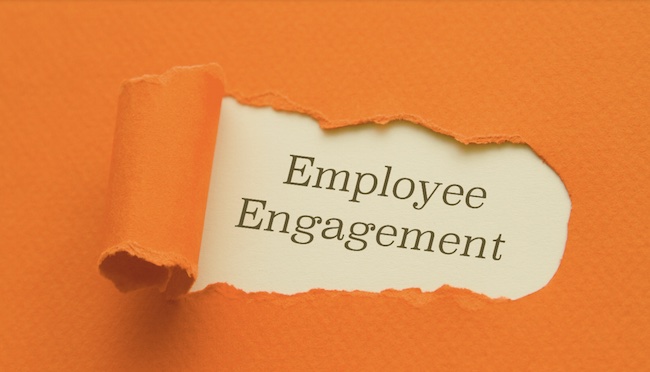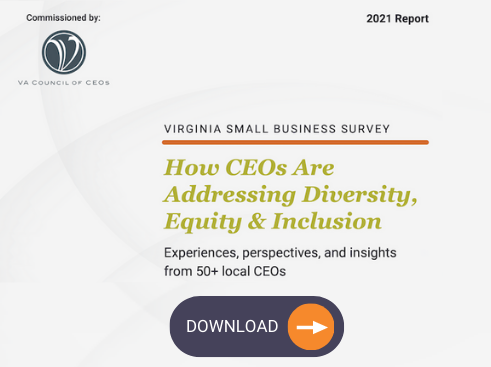How CEOs Can Improve Employee Engagement in Uncertain Times

Like so many things over the past 18 months, employee engagement has been a roller coaster ride. Gallup polling tracked this core business metric throughout the pandemic. Headlines went from acclaiming a historic rise in May 2020 to reporting a historic drop by July, then a rebound in October, a further increase in February, and finally a leveling out this summer.
The volatility notwithstanding, overall employee engagement is up. The latest data show 36 percent of U.S. employees are engaged by their jobs, compared with just 26 percent in 2000.
“At least 85 percent of business leaders worldwide now believe employee engagement is important…”
Business leaders should be pleased by this resilience in their hard-won employee engagement, as many invested heavily in driving improvement over the past two decades. At least 85 percent of business leaders worldwide now believe employee engagement is important, and gains have been realized through intentional workplace practices, such as executive involvement, manager education, and communications efforts.
Although worker attitudes are not entirely insulated from outside pressures, such as COVID-19, we can be more confident than ever that business leaders exert significant influence. As companies improved their response to the pandemic, employees became more engaged at work even as they struggled in many other facets of their lives.
This information may motivate CEOs to redouble their efforts to achieve maximum employee engagement. After all, research indicates that employees’ job-related attitudes are especially important to business outcomes during tough times. What’s more, engaged employees are far less likely to leave. So whether you’re concerned about profitability or are worried about talent and the Great Resignation, employee engagement is a powerful tool for achieving business objectives during this period of uncertainty.
How can you build more engagement? Here are a few tips.
#1 Mission Control
Author and speaker Simon Sinek has said that “When people are financially invested, they want a return. When people are emotionally invested, they want to contribute.” Few factors can more thoroughly engross employees in a company’s direction than a sense of purpose that aligns with their principles. In fact, at businesses ranked as Top Workplaces, up to 96 percent of employees say “this company operates by strong values.”
SMBs that clearly communicate a deep, inspiring, values-laden “why” can tap into a wellspring of employee engagement.
#2 A Full Package
Many SMBs today are concerned about workers’ rising wage demands and the impact on labor costs, margins, and even business survival. Although higher pay and signing bonuses have become popular talent acquisition tactics in some industries of late, companies concerned about engagement should consider the broader employment package as well.
As Inc. magazine explored, “money matters, but only to a certain degree. Perks matter, but only to a certain degree.” Other factors, from schedule flexibility and a healthy, supportive workplace to training courses and opportunities for advancement will shape employee engagement, helping to lower turnover and exert greater pull in the job market.
#3 The Voice
As mentioned above, communication fosters employee engagement and it builds trust. That’s why the Society for Human Resource Managers puts targeted communications in its recommended employee engagement toolbox.
Senior leaders and managers should use varied communications methods to share information about company goals, challenges, expectations, and more. Communication should not only flow from the top down, however. Employees must also feel that they can ask questions and receive the help and information they need, that they have a voice in organizational change, and that their input is welcome and receives due consideration.
#4 A Matter of (Management) Style
It’s become something of a truism that people don’t leave bad jobs, they leave bad managers. Managers serve as a vital conduit for information and a primary provider of employee support. With just one in three managers engaged at work right now, though, reenergizing mid-level leadership may be a prerequisite for achieving desired employee engagement improvements across the company.
Senior executives may want to model behaviors they would like their managers to adopt. For example, CEOs can strive to leverage managers’ strengths, rather than focusing on their weaknesses. A trusted “engagement hack” highlighted by Greater Richmond SHRM, building on the positive is effective in improving performance and, if managers turn around and use the technique with employees, can promote a welcoming workplace.
#5 Respect & Recognition
Some companies misunderstand employee engagement to mean rewards and recognition programs alone. This oversimplification carries severe downsides. Employee rewards programs tend to fall flat if the efforts don’t feel authentic or, worse, contradict other workplace messages and actions that devalue employees.
Praising great work and great people must be part of a culture of respect. From there, recognizing specific accomplishments in a timely manner and incorporating meaningful gestures of gratitude can help make any SMB a great place to work.
#6 Leadership
As TakingPoint Leadership CEO and former Navy SEAL Brent Gleeson wrote in Forbes, “Leaders improve engagement by defining and communicating a powerful vision for the organization. They hire and develop managers that are emotionally invested in the organization’s mission and vision and give them the resources to build great teams with the right people in the right roles. They empower.”
How can you grow as that type of leader? Invoke the power of your peers.
VACEOs is a safe, confidential venue where top executives share their challenges and successes explore ideas and solutions with fellow CEOs. Taking part in a Roundtable might, therefore, be one of the quickest routes to enhanced employee engagement.
If you’re not yet a VACEOs member, maybe you’d like to learn more. Visit www.vaceos.org for information about our organization and upcoming meet-and-greet events where you can get to know us.
Our “Post-COVID” World: Returning to the Office

In March 2020, the business world went virtual. Offices closed, desks emptied, and the break room went silent. Now, more than a year later, your business might have already brought employees back to the office or have plans to do so soon.
As your employees come back, it’s important to remember one thing: COVID isn’t necessarily over. That’s why “Post-COVID” is in quotation marks in the title of this article. Yes, case numbers, hospitalizations, and deaths have declined dramatically since the start of the vaccination effort. That’s what is allowing companies to reopen their offices.
But COVID is not completely over, nor is it going away entirely. This fall, you may need to deal with a surge in cases driven by a variant. Or your operations may be affected by the need for a booster vaccine. As your employees return to in-person work, here are a couple things to keep an eye on.
Recommendations For Your Business: It Depends On The Details
Your employees’ degree of comfort, and the specific health recommendations we can make, will vary by business. In general, the more people – especially indoors – the greater the risk. The fewer people vaccinated or unknown, the greater the risk. The more vulnerable the potential recipient, the higher the risk.
In Virginia, we have been lucky to enjoy relatively low active COVID levels combined with relatively high vaccination (at least through July 2021 when this was written). Of course, that may change as variants emerge and we head into the fall, when we reasonably expect the prevalence of respiratory illnesses, like COVID or influenza, to increase.
Keep an eye on case numbers and the percentage of those being tested in your area. As they increase, the risk to your employees increases and your business should, at the very least, be prepared to make adjustments once again.
Mental Health: The Stress Remains
We are returning to our new normal, but that doesn’t mean the lasting effects of COVID have dissipated. The past 18 months or so have been hard for a lot of people.
Many have suffered losses of loved ones. Many have had enormous challenges in balancing professional and family responsibilities. And as your employees return to the office, they will face more stress related to kids and other family members, especially as children return to school in the fall.
Managing your employees’ everyday stress will be one of your primary challenges. A few months ago, 84% of adults reported feeling at least one emotion associated with prolonged stress (anxiety, sadness, anger, etc.). Many people aren’t sleeping well – 40% of adults have reported having trouble sleeping during the pandemic.
It’s likely you will see signs of stress among your employees in the office. What’s the best thing you can do for them? Recognize that we have all been through some tough stuff, and that our experiences have been and will continue to be individual. When possible, individualized solutions and approaches are ideal.
Employee Health: What To Focus On
As your employees return to the office, you may be wondering: what can we do to encourage health and wellness among our workforce? In many ways, this hasn’t changed since the start of the pandemic.
First, encourage your unvaccinated employees to get vaccinated. The vaccines are the safest and most effective way to protect both yourself and others.
Overall, emphasize the importance of eating healthier, exercising regularly, and sleeping better. All three help improve our immune systems – the first line of defense against any illness, COVID or not.
Also, remind them to schedule any preventive care appointments (colonoscopies, mammograms, annual physicals, etc.) they may have put off due to the pandemic. The National Cancer Institute projected missed screenings and other COVID-impacts could results in 10,000 additional deaths from breast and colon cancer of the next 10 years. We all need to get caught up on preventive healthcare appointments quickly.
For in-office safety protocols, the balance of managing vaccinated vs. unvaccinated employees is a challenge. In general, unvaccinated employees should continue to wear a mask, especially when around other unvaccinated people. Social distancing and regular hand washing continue to be easy ways to reduce risk.
And for managing the after-effects of COVID, be flexible. Hybrid-work schedules, flexible time, and a focus on results rather than process may help.

About the Author
Janet Kiss is a Membership and Corporate Sales Associate at PartnerMD and is available for one-on-one and/or roundtable conversations for VA Council of CEO Members.
Editors Note: PartnerMD is a Sponsor of Virginia Council of CEOs.
3 Critical Assets Needed for Strategic Readiness in Business

As we reflect on the past 17 months, resilience in our organizations has become a critical factor in moving forward. The ability to be resilient and return to a more recognizable business state, relies heavily on a solid foundation in your small business. The disruption we’ve experienced has been challenging but presents you with opportunity to:
- Revisit the foundation,
- Test resilience, and
- Assess and measure your organization’s strategic readiness.
With the Tokyo Olympics fresh in our minds, we challenge you to think of strategic readiness like an Olympic Triathlon. In the Triathlon, there are three vital components where efforts need to be focused – swimming, biking, and running. Athletes need to be strong and efficient in each of these three areas to realize their goal, and they must capitalize on assets such as endurance, strength, and mental toughness. Similarly, organizations have critical intangible assets that require focus and alignment. These intangible assets fall into three categories – human capital, information capital, and corporate culture. Developing and balancing these three areas in your small business will create a strong organizational foundation and will be key to facing challenges going forward.
#1) Human Capital
Human Capital is often defined as the knowledge, skills and experiences of your employees in terms of their value or cost to your organization. Human Capital Readiness represents the depth and availability of your employees’ knowledge, skills and experience as it relates to your business strategy. An assessment of your Human Capital Readiness will bring to light the gaps that need to be addressed. Is your Human Capital aligned with your business strategy? Are you realizing the value? Do you have the right people in the right places? Have you identified the strategic job families crucial to drive success? Are you measuring the success of your workforce and if so, how?
#2) Information Capital
By determining IT efficiencies at the forefront, company functions can be aligned, creating a sustainable and reliable partnership. Automation is essential to all functions within an organization. Increasing cost-effectiveness in areas such as infrastructure and applications is crucial in supporting internal processes and strategic planning. The partnership between HR and IT not only compliments each function but adds value, process automation, and strategic alignment within the organization. This Forbes article demonstrates how HR and IT can build organizational strength by partnering to:
- Invest in updated technology
- Invest in updated software
- Acquire new talent
#3) Corporate Culture
Harnessing the value of your people sets the stage for a robust workforce, and efficient processes keep the trains running on time. However, without buy-in from key talent into these new and improved processes, the overall company infrastructure is less sound. Culture is a critical piece of the foundation necessary to build a strong company. Are your employees aligned with your company’s strategic goals? Do they understand and believe in your mission, vision, and values? Does your leadership have the skills to foster this corporate culture? Is there an understanding of the organization’s core competencies which define your business allowing you to stand out from your competitors? Is there a robust Employee Value Proposition (EVP) to drive talent, engagement, and retention?
Similar to competing in the Triathlon, the ability to achieve strategic readiness with intangible assets offers an intimidating challenge, as organizations will need the mental tenacity, energy, and elevated levels of knowledge management to make these three assets ready for strategic implementation.
Athletes often utilize a coach to provide the knowledge and experience to help them prepare for a big race. Likewise, organizations can enlist the expertise of a firm specializing in HR consulting or business advisory to assist. Taking time now to assess your organization’s strategic readiness and developing your intangible assets will help you realize your goals. Are you up for the challenge? We can help!- Experts@FahrenheitAdvisors.com.
About the Authors
Melody Donovan-Hopkins, Senior Consultant at Fahrenheit Advisors. As an operationally focused strategic senior human resources professional, Melody has over 17+ years of progressive experience in the information technology, healthcare data analytics, life sciences, and financial industries. She is a strategic human resources servant leader with business acumen managing the employee life cycle.
Katherine Zampolin, Senior Consultant at Fahrenheit Advisors. With over 25 years of experience, Katherine provides a broad range of experience in leadership development, coaching, corporate culture, and talent management. Through her authentic and practical approach, she partners with organizations to help them strengthen their culture, engage and develop their employees, and reach their goals. Katherine has facilitated a broad range of training programs across all levels, with topics ranging from leadership skills and organizational change to diversity and inclusion and teambuilding.
EDITOR’S NOTE: Content provided by Fahrenheit Advisors. Fahrenheit Advisors is a Sponsor of Virginia Council of CEOs.
3 Insights You Need To Know Before Starting A Diversity, Equity, and Inclusion Program

Taking the first steps toward a well thought out, well rounded DEI program can be difficult, confusing, and uncertain. Your best strategy is to follow the path of those who have gone before you. Below are three insights and opportunities other CEOs have identified as critical to the success of the program you are considering:
1) Have thick skin. Be willing to get uncomfortable. Listening isn’t enough. Take action!
2) Start somewhere. Don’t over-complicate and avoid taking action due to over-analysis.
3) Ask a lot of questions. Read a lot of resources.
Are you ready to start a diversity, equity, and inclusion program in your organization or improve the one you have in place? Don’t go it alone! Download our FREE report “How CEOs Are Addressing Diversity, Equity & Inclusion – Experiences, perspectives, and insights from 50+ local CEOs.”
Is the ‘Great Resignation’ an Opportunity for Virginia SMBs?

In April 2021, 4 million people across the U.S. quit their jobs. In May, another 3.6 million walked away.
Are these signs of a turnover apocalypse in progress in the Commonwealth? And if so, what can Virginia business leaders do to retain their employees and even secure new talent in a challenging environment?
A Matter of Perspective
Let’s face it, some scary forecasts have been tossed around lately. A frequently cited survey by Prudential Financial, for example, found that a staggering one in four workers plans to leave their current employment. Even more pessimistic, the Microsoft 2021 Work Trend Index estimates that 41% of employees worldwide may be moving on.
Leave the crystal ball behind, however, and the news is not as dire. Consider that over the long haul, about about 3.5 million Americans resign their positions in any given month. In April 2020, that number plunged to 1.9 million, indicating that some employees likely delayed a planned job search due to COVID-19 concerns.
As the calendar year changed over and pandemic fears began to ease, pent-up turnover broke out. But total quits, according to the most recent data available, are now running only a little higher than historical average.
Rewarding, Fulfilling, and Flexible
Was that the Great Resignation we’ve been hearing so much about? Is it over?
June employment numbers haven’t yet been posted, but regardless of whether Virginia SMBs can count on continued stabilization in voluntary turnover, local CEOs are eagerly checking in on their talent acquisition and retention strategies.
“The result of our national period of introspection—a workforce more focused than ever on finding employment opportunities that are rewarding, fulfilling, and flexible.”
Ask any experienced business owner and they’ll tell you that a regular talent review is an important best practice. The deep shifts in employee attitudes toward work right now, though, make such an appraisal especially urgent. Companies that adapt most effectively to today’s rapidly evolving employee perspectives can gain competitive advantage in a tight job market and capture the talent necessary to capitalize on a V-shaped economic recovery.
The best news, small and mid-sized businesses might be in the catbird’s seat here. Despite perceptions about enhanced unemployment benefits and heightened salary demands, workers themselves are telling a larger story about their career goals. Although pay scale certainly matters, countless employees have reexamined their employment priorities in light of COVID-19 and discovered what matters more than money.
The result of our national period of introspection—a workforce more focused than ever on finding employment opportunities that are rewarding, fulfilling, and flexible.
Good Questions
As any VACEOs Roundtable participant quickly realizes, good questions are often more valuable than great answers. So here are some talent-related queries you may want to pursue alone or with your peers in 2021, whether the Great Resignation comes for your industry or not.
#1 Mission
Some employees who took a step back in 2020 are now seeking a greater sense of purpose on the job. Take U.S. Marines veteran Jake Mancini, who was profiled in the Richmond Times-Dispatch in July. After leaving a career in manufacturing to become a software engineer, he’s earning less but finding his new position as a defense contractor, with a role to play in helping the troops, more fulfilling.
- How do I communicate my company’s mission and gain buy-in from workers?
- How can I help employees find a sense of purpose in their jobs?
#2 Opportunity
Mancini, mentioned above, was among the millions of Americans who used time spent unemployed to acquire new training and credentials. He’s proof positive that Virginia workers don’t just want more, they want to reach higher, too.
- How can I benefit from a pool of newly upskilled workers?
- How can I tap into the desire for training and advancement to re-inspire your workforce?
#3 Balance
From frontline retail, restaurant, and healthcare staff to Zoomed-out office workers, burnout is an enduring issue. What’s more, pandemic conditions led many employees to reassess the time they spend away from home. Some are now eschewing long commutes and late nights in the office in favor of remote and hybrid schedules and other family-friendly accommodations.
- How can I help employees regain equilibrium after 18 difficult months?
- How can I collaborate with employees to improve their work/life balance?
Conditions for SMB Success?
Small and mid-sized businesses frequently enjoy greater agility than their larger counterparts, a key advantage in a rapidly changing talent market. What’s more, smaller companies can be particularly effective at engaging employees and valuing each member of the team as an individual. Given what workers say they want in post-pandemic employment, Virginia’s SMBs may, therefore, find that other companies’ talent losses over the coming months become their gains.
Do you agree?




Recent Comments